![]()
![]()
 |
| Nootka leaving Halifax for Korea, November 1950. (FOAC photo submitted by Christopher Varley) |
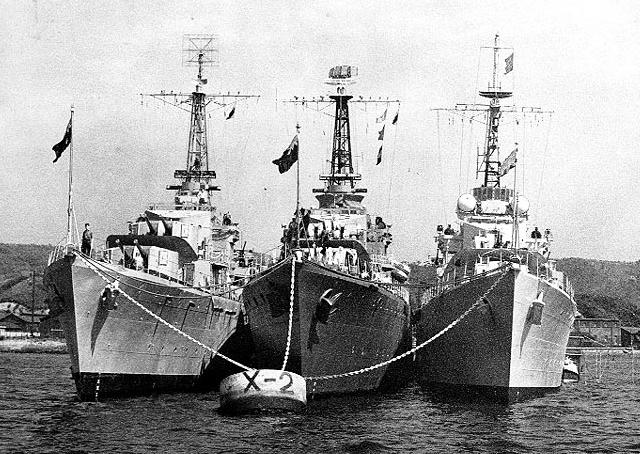 |
| After an extended period of operations in Korean
waters, three destroyers from three different navies tie to a mooring buoy
at a southern Japanese port (presumably Sasebo), circa May 1951.
The ships are (from left to right): HMAS Warramunga (Australian Tribal Destroyer, 1942); HMCS Nootka (Canadian Destroyer, 1946) and HMS Cockade (British Destroyer, 1945). All three were assigned to the United Nations Blockading and Escort Force, commanded by Rear Admiral Allan E. Smith, USN. This photograph was released by Commander, Naval Forces Far East on 19 May 1951. (Official U.S. Navy Photograph. From the "All Hands" collection at the Naval Historical Center. Submitted by David Shirlaw) |
B' gun in action in Korea 1952. (Photo by Don Stitt, Nootka's photographer. Submitted by Don Dawson)
Korea 1952: Nootka is taken on fuel from Green Ranger in the Yellow Sea. Too close for comfort! (Photo by Don Stitt, Nootka's photographer. Submitted by Don Dawson)
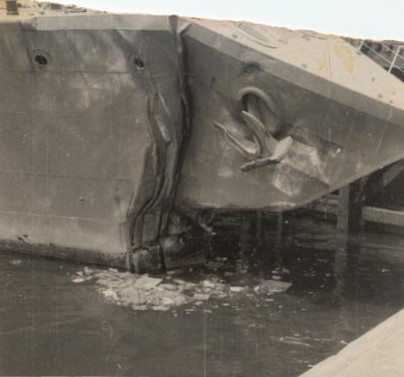 |
In 1955, Nootka began a series a workups after her major conversion. After leaving Ireland Island Dockyard in Bermuda for anti-submarine exercises on May 5, 1955, she ran into the breakwater causing extensive damage to the bow. The bulkheads held and HMCS Iroquois came to her assistance. Nootka was laid up between May 24 and September 6 in Saint John , N.B. (Photo via Michael Bird of Rochester, N.Y.)
On her way home from Bermuda for repairs. (Photo via Andy Barber)
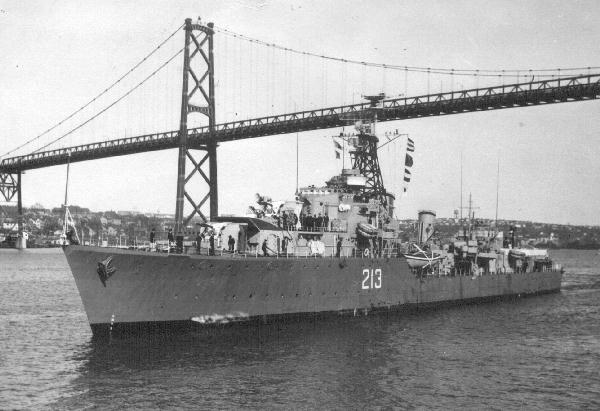 |
| L.S. Woodword took this picture of Nootka in late 1954 or early 1955 as she was preparing to dock in Halifax. (Submitted by Michael Bird, Rochester N.Y.) |
HMCS Nootka fitted with electrical anodes to reduce corrosion. (Photo courtesy DND Defence R&D Canada web page) As a result of wartime research, the "cathodic protection system" was developed in the 1950s to prevent underwater corrosion of ship hulls. An anode was fitted to the hull and electrical power supplied to reverse the current normally caused by corrosion and, hence, to eliminate it. This system, which also required research to improve anti-fouling paints, has been adopted by most navies and international shipping companies, with savings estimated in billions of dollars.
A/A gun practice in 1959. (Photo courtesy of Gary Pollock)
Jackstay transfer in 1959 with HMS Ulster (F83), a RN Frigate. (Photo courtesy of Gary Pollock)
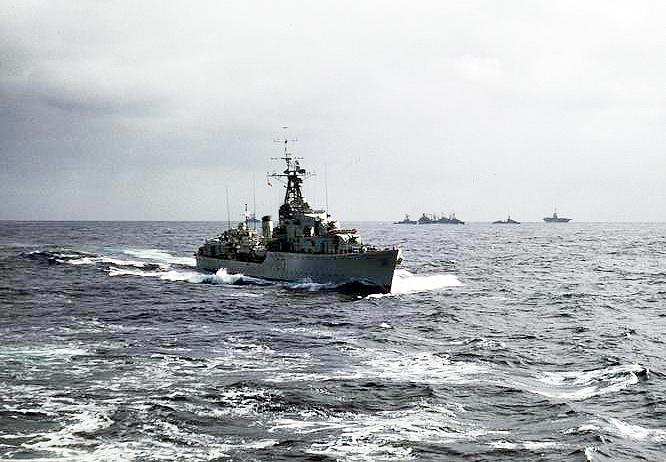 |
| Above and below: Nootka making her approach for an underway replenishment. These photos were taken from USS Nantahala AO-60, during a NATO exercise in 1960. (Photos by Jack Enyeart) |
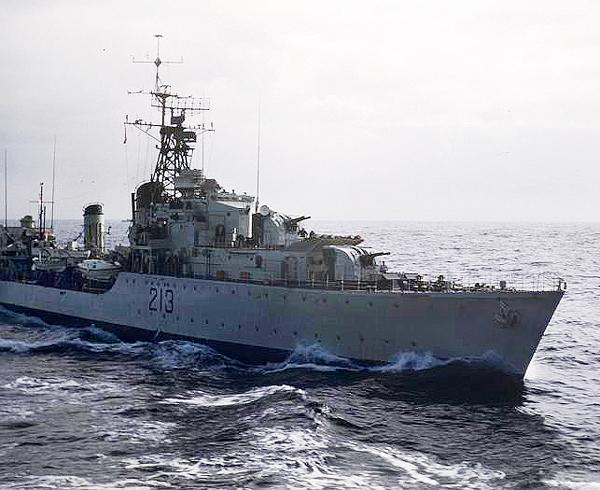 |
Contributors:1) Christopher Varley <varleyart(at)sympatico.ca>
2) Jack Enyeart < jenyeart(at)bellsouth.net
|
|
July 30/10